Abstract
OBJECTIVES: The accepted sine qua non for estimating the difference in efficacy between a new and a standard treatment is a randomized controlled clinical trial. Yet in some situations it is either practically or ethically impossible to conduct such a trial. For example, patients who are desperately ill may decline to participate when they learn they may not receive the new treatment, especially when that treatment is readily available outside the experimental protocol. Likewise, in a prophylactic trial of a promising vaccine, recruitment of persons at greater risk may falter or fail. Our objective is to demonstrate that a rigorous comparison of treatments may still be attainable. METHODS: The features of a controlled clinical or prophylactic trial are reviewed from the perspectives of Food and Drug Administration regulations, ethical considerations, and practical problems. RESULTS: An explicit risk-based allocation method of design and analysis is proposed, one guaranteeing that all subjects at greater risk will receive the new treatment. CONCLUSIONS: Under certain conditions, a risk-based allocation trial can furnish consistent estimates of both standard and experimental treatment effects for those at greater risk while avoiding certain difficulties caused by randomized treatment allocation.
Full text
PDF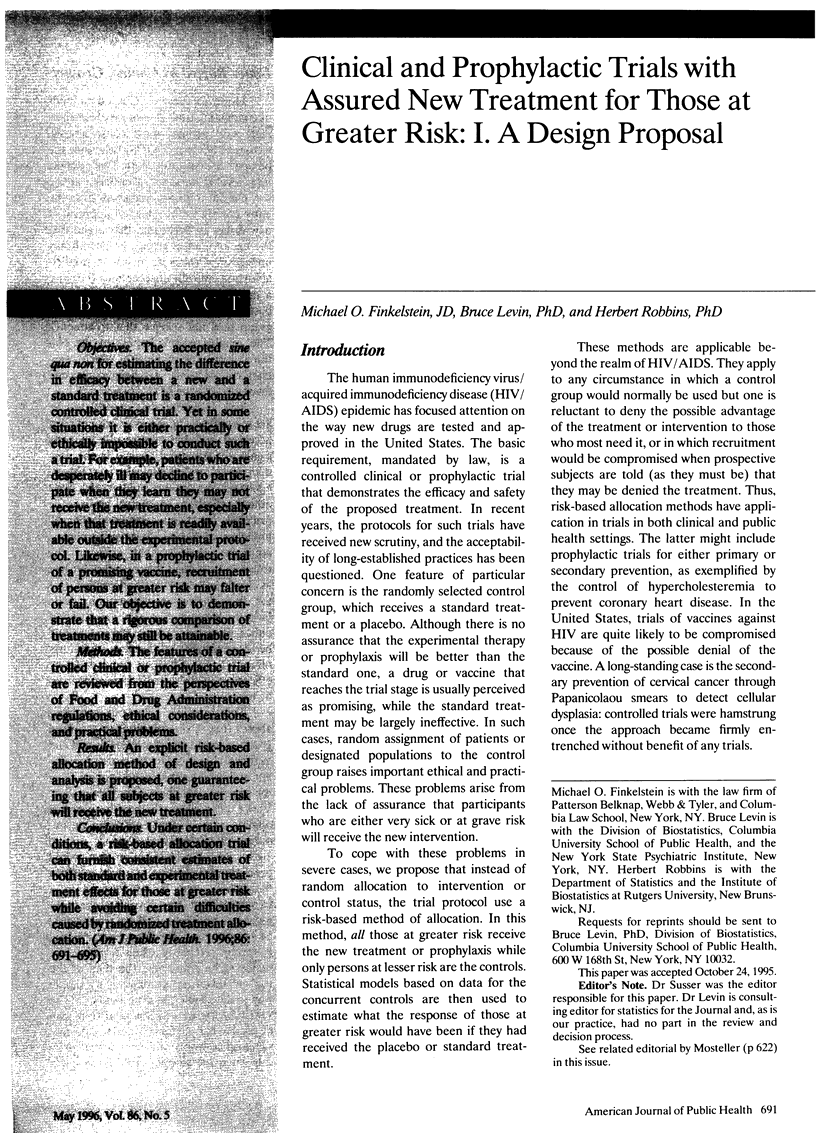
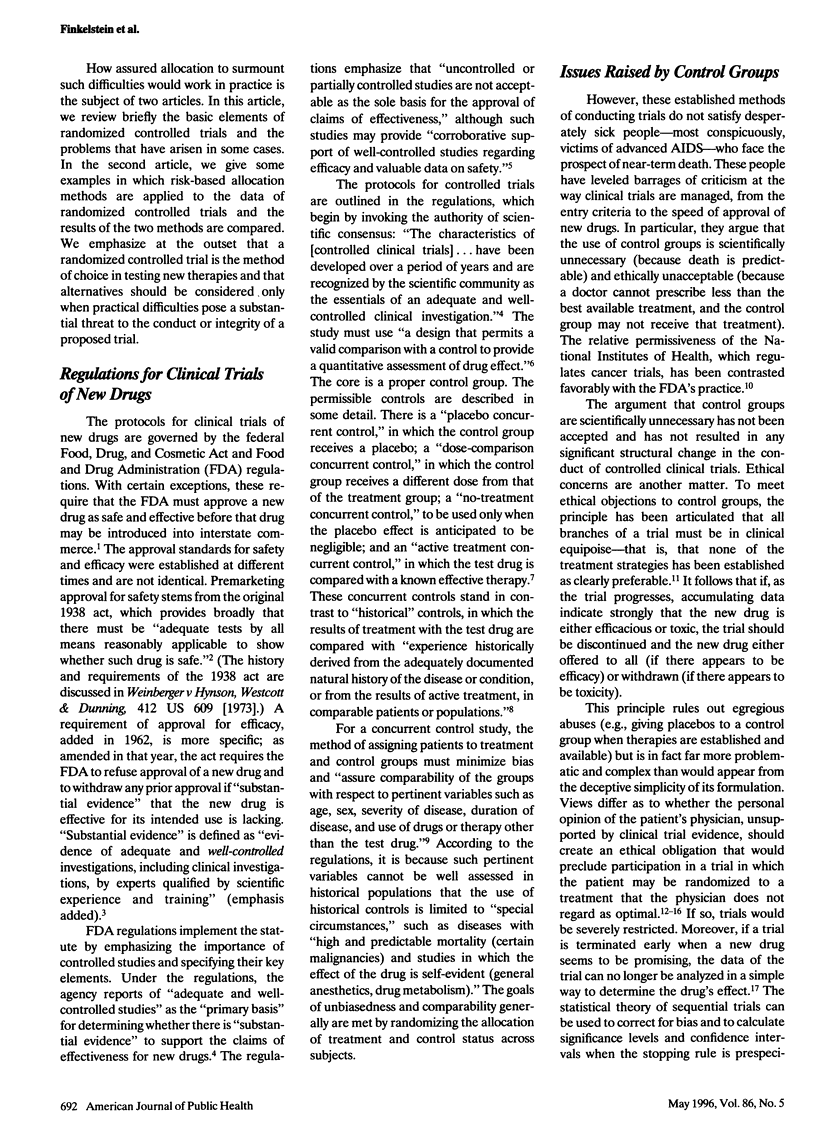
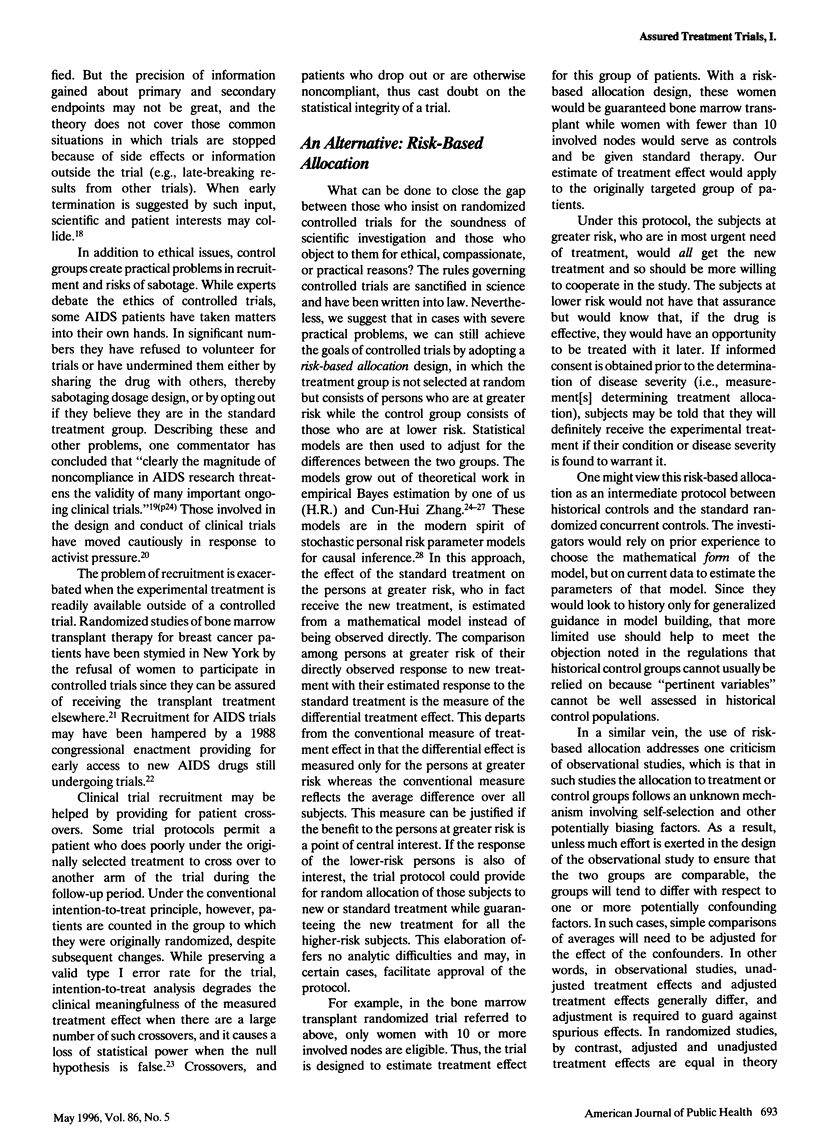
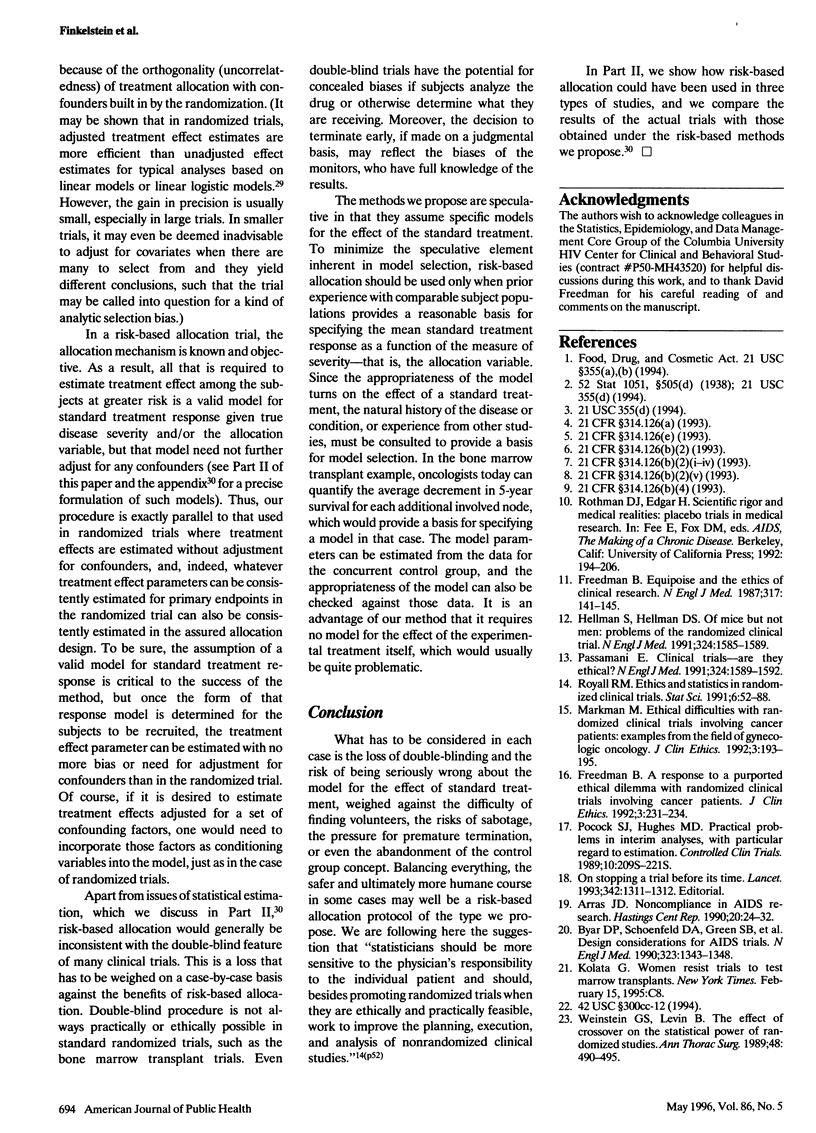
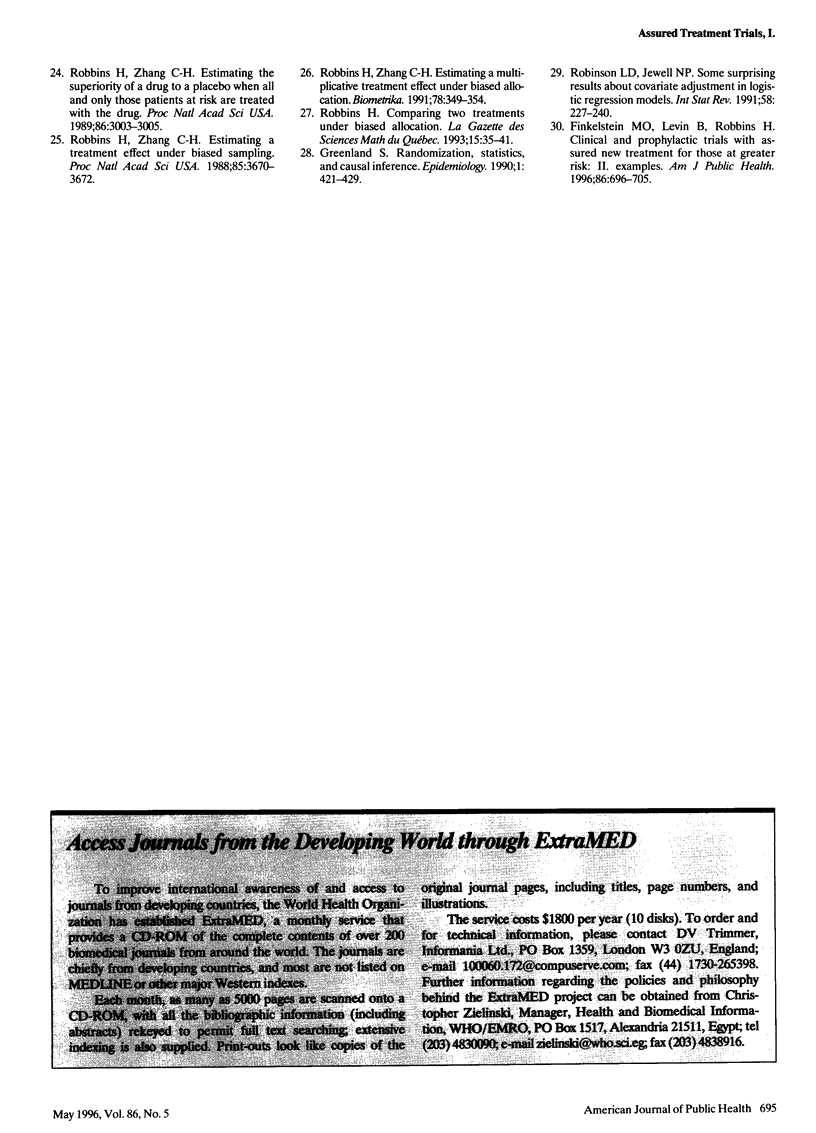
Selected References
These references are in PubMed. This may not be the complete list of references from this article.
- Arras J. D. Noncompliance in AIDS research. Hastings Cent Rep. 1990 Sep-Oct;20(5):24–32. [PubMed] [Google Scholar]
- Byar D. P., Schoenfeld D. A., Green S. B., Amato D. A., Davis R., De Gruttola V., Finkelstein D. M., Gatsonis C., Gelber R. D., Lagakos S. Design considerations for AIDS trials. N Engl J Med. 1990 Nov 8;323(19):1343–1348. doi: 10.1056/NEJM199011083231912. [DOI] [PubMed] [Google Scholar]
- Finkelstein M. O., Levin B., Robbins H. Clinical and prophylactic trials with assured new treatment for those at greater risk: II. Examples. Am J Public Health. 1996 May;86(5):696–705. doi: 10.2105/ajph.86.5.696. [DOI] [PMC free article] [PubMed] [Google Scholar]
- Freedman B. A response to a purported ethical difficulty with randomized clinical trials involving cancer patients. J Clin Ethics. 1992 Fall;3(3):231–234. [PubMed] [Google Scholar]
- Freedman B. Equipoise and the ethics of clinical research. N Engl J Med. 1987 Jul 16;317(3):141–145. doi: 10.1056/NEJM198707163170304. [DOI] [PubMed] [Google Scholar]
- Greenland S. Randomization, statistics, and causal inference. Epidemiology. 1990 Nov;1(6):421–429. doi: 10.1097/00001648-199011000-00003. [DOI] [PubMed] [Google Scholar]
- Hellman S., Hellman D. S. Of mice but not men. Problems of the randomized clinical trial. N Engl J Med. 1991 May 30;324(22):1585–1589. doi: 10.1056/NEJM199105303242208. [DOI] [PubMed] [Google Scholar]
- Markman M. Ethical difficulties with randomized clinical trials involving cancer patients: examples from the field of gynecologic oncology. J Clin Ethics. 1992 Fall;3(3):193–195. [PubMed] [Google Scholar]
- Passamani E. Clinical trials--are they ethical? N Engl J Med. 1991 May 30;324(22):1589–1592. doi: 10.1056/NEJM199105303242209. [DOI] [PubMed] [Google Scholar]
- Pocock S. J., Hughes M. D. Practical problems in interim analyses, with particular regard to estimation. Control Clin Trials. 1989 Dec;10(4 Suppl):209S–221S. doi: 10.1016/0197-2456(89)90059-7. [DOI] [PubMed] [Google Scholar]
- Robbins H., Zhang C. H. Estimating a treatment effect under biased sampling. Proc Natl Acad Sci U S A. 1988 Jun;85(11):3670–3672. doi: 10.1073/pnas.85.11.3670. [DOI] [PMC free article] [PubMed] [Google Scholar]
- Robbins H., Zhang C. H. Estimating the superiority of a drug to a placebo when all and only those patients at risk are treated with the drug. Proc Natl Acad Sci U S A. 1989 May;86(9):3003–3005. doi: 10.1073/pnas.86.9.3003. [DOI] [PMC free article] [PubMed] [Google Scholar]
- Royall Richard M., Bartlett Robert H., Cornell Richard G., Byar David P., Dupont William D., Levine Robert J., Lindley Foster, Simes R. John, Zelen M. Ethics and statistics in randomized clinical trials. Stat Sci. 1991;6(1):52–88. doi: 10.1214/ss/1177011934. [DOI] [PubMed] [Google Scholar]
- Weinstein G. S., Levin B. Effect of crossover on the statistical power of randomized studies. Ann Thorac Surg. 1989 Oct;48(4):490–495. doi: 10.1016/s0003-4975(10)66846-4. [DOI] [PubMed] [Google Scholar]


